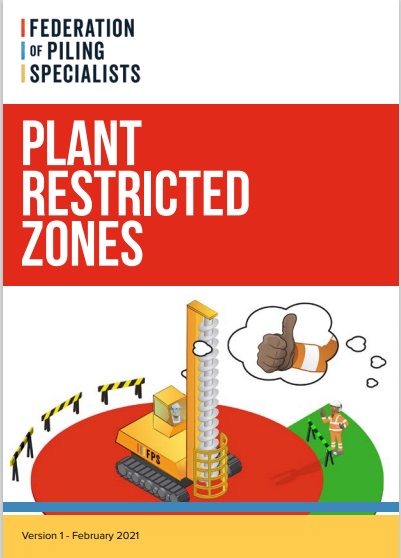
The Federation of Piling Specialists (FPS) is pleased to announce the publication of its Guidance on Restricted Zones, which is available FREE to download from its website.
The handbook has been produced to assist members in managing restricted zones around plant and equipment usually found in a piling and specialist foundations worksite, as well as the importance of understanding that sufficient space is provided to enable safe operations and the effective separation of people and operational plant.
It is a well-known expression that “people and plant don’t mix”, and we know that many of the most serious accidents involving specialist geotechnical works arise when operatives are working close to machines and are either not seen by operators of the plant or are struck by objects falling from the machinery. It is intended that the approach and guidance offered by this document is adopted by all FPS members and that it becomes the industry standard for limiting the presence of people within the restricted zones.
Of course, the guidance does not only apply to operatives themselves, it applies to managers and client staff too and will require that clients give careful consideration to the space that they provide the contractors to work in and make others on site aware of the need to respect these restricted zones.
Using the strapline “Thumbs Up for Safe Access”, the 44-page colourful handbook highlights the dos and don’ts of safe access. It provides clear and concise illustrations of typical working situations with Red Zones “Authorised Person only” and Green Zones identified. Everyone should approach the machine from the green zone and before entering the red zone and highlight your presence to the plant operator / driver with a “Thumbs UP” that is acknowledged by the operator before entering Red Zone.
Speaking about the launch of the guide Steve Hadley, Chair FPS said: “When you look at the statistics, the evidence is clear, people are being hurt after being struck by machinery and by objects falling from the machinery. We don’t currently have the technology to remove people from site completely, but we can manage our working areas to help reduce the risk of people coming to harm. This excellent document shows straightforward ways in which to do that.”
The guide can be downloaded from the FPS website – www.fps.org.uk/guidance/restricted-zones-guidance